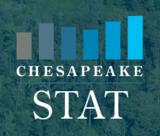Tools to Track Progress in the Chesapeake Bay Watershed
A number of tools are used to track progress in the Chesapeake Bay Watershed.
- ChesapeakeStat - ChesapeakeStat provides reliable, results-oriented data and information about Chesapeake Bay Program (CBP) partner restoration activities, funding and progress toward goals. The information is displayed on a public website. ChesapeakeStat improves information-sharing and decision-making among partners and promotes government accountability. Visit the ChesapeakeStat website.Exit
- BayTAS - The Chesapeake Bay TMDL Tracking and Accounting System (BayTAS) is an interactive tool that allows EPA, CBP partners and the Bay jurisdictions to track progress toward implementing the Bay TMDL. Bay jurisdictions include Delaware, Maryland, New York, Pennsylvania, Virginia, West Virginia and the District of Columbia. BayTAS uses maps and charts to visualize the Bay TMDL 2009 baseline data, 2017 interim goal projections and 2025 allocations for nitrogen, phosphorus and sediment. Users can view pollution data by basin, jurisdiction, stream segment or source sector. View BayTAS on the Water Quality: TMDL Tracking website.Exit
- Two-Year Milestones - Reporting of two-year milestone progress is tracked against the Bay TMDL allocations and the level of commitments made in the jurisdictions' Phase II Watershed Implementation Plans. View the milestone commitments on the Water Quality: Two-Year Milestones website.Exit
- Bay Health - Scientists evaluate Chesapeake Bay health by monitoring important habitats, fish and shellfish, and water quality measures in the Bay and its watershed. They also track pollution, population and other measures that affect the Bay's health. Learn more about Bay health on the Chesapeake Bay Program website.Exit
- Bay Restoration and Protection Efforts - The Bay Program partnership implements and tracks progress toward goals to reduce pollution, restore habitats, manage fisheries, protect watersheds and foster stewardship. Learn more about Bay restoration and protection efforts on the Chesapeake Bay Program website.Exit
- Federal Agency Progress - Executive Order 13508, Chesapeake Bay Protection and Restoration was signed by President Obama in May 2009, recognizing the Chesapeake Bay as a national treasure. This Executive Order called on the federal government to lead a renewed effort to restore and protect the estuary and its watershed. The Chesapeake Bay Executive Order website contains reports on progress by federal agencies in meeting the goals of the Chesapeake Bay TMDL. Read the reports on the Chesapeake Bay Executive Order website.Exit

